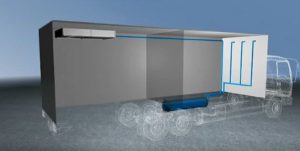While OSHA regulations require the use of an oxygen monitor anywhere that compressed gases or cryogenic liquids are used or stored indoors, the regulation does not provide sufficient detail for facilities on how to set up an oxygen monitor. Businesses want to comply with the regulations but are left wondering what compliance looks like. At […]
READ MORE
Scientists from MIT and Harvard University are placing their faith in a gene editing tool that may revolutionize the treatment of deadly diseases. CRISPR, which stands for Clustered Regularly Interspaced Short Palindromic Repeats, has the potential to unlock the next generation of treatments for conditions like cancer, ALS, or Alzheimer’s. Learn how CRISPR is poised to change genome editing and biomedicine […]
READ MORE
Chip bags have all that air in them for a valid reason — and it’s not air, anyway, it’s nitrogen gas. So what is this gas doing in your bag of crisps? First, the gas acts as a preservative so your chips are as crispy when you open the bag as the day they were […]
READ MORE
Thanks to technological innovations, the food distribution industry has a greener way to protect refrigerated food during transit: Nitrogen refrigeration. The existing system relies on diesel-powdered mechanical refrigeration units. Although these units are effective, they release significant levels of noise and air pollution. While the new innovations decrease emissions to safeguard the environment, there is a hidden […]
READ MORE
New developments in cryogenic freezing are transforming the frozen food industry by making it easier to freeze all sorts of items quickly while retaining the highest nutritional value. Cryogenic and tunnel freezers are easy to use, yet they pose a hidden health risk. Learn why you may need an O2 monitor if your frozen food […]
READ MORE
Cryotherapy (or “frost therapy”) has been used for centuries and is growing in popularity. Over the last several years, numerous cryotherapy “spas” have opened in the United States and, as of 2017, there were some 400 such spas operating cryochambers (or cryosaunas) in 38 states. Cryotherapy spas have come under scrutiny after a 2015 incident […]
READ MORE
3D printing is officially skyrocketing, with industrial applications in medical, biotech, aerospace, defense, and consumer electronics industries growing daily. At the heart of this acceleration is the additive manufacturing or AM process, which allows for easy printing from computer-aided design templates. As this new technology reaches its tipping point, review what the growth process says about the safety […]
READ MORE
There is no question that working with inert gasses can be a useful but dangerous practice. Ideally, there should be an oxygen deficiency monitor in your facility to make sure the air is safe to breathe in case of a gas leak. If your facility is in Denver County, and you don’t yet have an […]
READ MORE
Cryotherapy is a medical treatment that uses extremely low temperatures to help with pain and inflammation. Not to be confused with cryopreservation, during cryotherapy, only the patient is subjected to extreme cold for a short amount of time. It may seem futuristic, but it is actually an increasingly common treatment among athletes to replace […]
READ MORE











